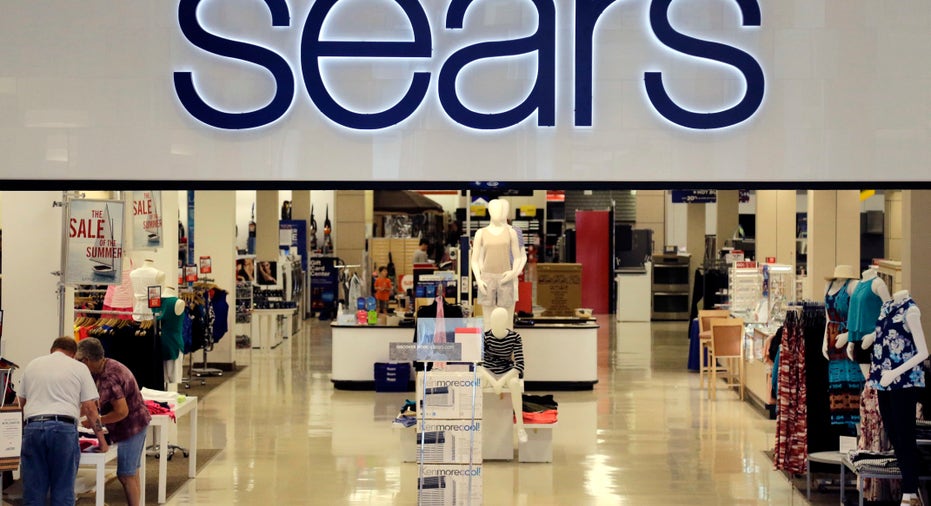Warning Signs Mount on Sears's Path

The clock is running out on Sears Holdings Corp.'s (NASDSAQ:SHLD) turnaround.
The struggling retailer bought some breathing room through moves to raise more than $1.5 billion in recent weeks, but investors are growing increasingly doubtful that Sears will ever get back on track.
The cost of insuring the retailer's bonds hit new highs and its stock price continues to tumble falling 5% Monday to close at $6.52, an all-time low, signaling fresh concerns about the retailer's future
Sparking the latest bout of investor anxiety were downgrades of Sears's debt last month by Fitch Ratings and Moody's Investors Service that were prompted by the retailer's dismal holiday sales and continued losses.
As a result, the price to insure $10 million of Sears bonds against default for five years rose to a record of around $4.6 million annually last week, up from $3.3 million in September, suggesting investors believe the bonds have a higher change of defaulting, according to IHS Markit, a financial information company.
Retailers have fallen out of favor since the beginning of the year, as several large chains have warned of disappointing holiday sales and announced store closures, while smaller companies such as Limited Stores Co. filed for bankruptcy protection. But Sears's problems go beyond the industry's woes.
Sears has been selling assets to fund losses in its retail business and investors worry that this strategy isn't limitless. Between 2012 and 2016 the company raised $12 billion from divestitures, according to Fitch, largely through the sale of real estate but also by spinning off businesses such as Lands' End (NASDAQ:LE), Sears Hometown and Outlet Stores Inc. (NASDAQ:SHOS) and Sears Canada Inc. (NASDAQ:SRSC).
Since fiscal 2011, Sears has lost $8.2 billion while total sales have fallen nearly 40% to $25 billion. Sales at Sears stores open at least 12 months fell as much as 13% in November and December. "It's hard to take Sears seriously as a retailer that will survive," said Mary Ross Gilbert, a credit analyst with Imperial Capital. "At some point the asset sales won't be enough to put this company on stable footing."
Sears Chief Executive Edward Lampert, the hedge-fund manager who is also the company's chairman and largest shareholder, hasn't given up on turning the company around. "We are committed to improving short-term operating performance in order to achieve our long-term transformation," he said last month in a press release announcing a series of moves aimed at shoring up the company's financial position.
Sears sold its Craftsman brand to Stanley Black & Decker (NYSE:SWK) for $900 million, It will receive $525 million once the deal closes with the rest of the payments accruing over time.
It received a $500 million letter of credit and a $500 million real-estate-backed loan from affiliates of Mr. Lampert's hedge fund. It sold five stores to mall owner CBL & Associates Inc. for $72.5 million, and it is closing 150 unprofitable stores.
Those transactions have put Sears well on its way to raising the $2 billion that Fitch Managing Director Monica Aggarwal estimates the company needs this year to fund operations, assuming no material improvement in its business.
But Sears will need to raise an additional $2 billion next year, according to Ms. Aggarwal, and its pool of divestible assets isn't limitless -- one reason why she downgraded Sears's senior unsecured debt last month. "Let's say they get through this year, how much can they raise next year?" Ms. Aggarwal said. "There is no turnaround in the underlying business."
A chunk of its stores have been used as collateral against debt. Of the locations that Sears owns outright, 190 aren't pledged and therefore available to sell, according to Ms. Aggarwal. Using the amount that Sears received in recent deals as a benchmark, Ms. Aggarwal values those properties at $2.5 billion, or roughly $13.2 million per location.
The company also operated 1,100 leased stores as of Oct. 29. Many of the leased stores are at below-market rents, according to Sears, which means the company could sell the leases for a profit. Sears also has 28 distribution centers, of which nine are owned and 19 are leased and its 200-acre headquarters in Hoffman Estates, Ill.
Other assets that Sears is trying to sell include the Kenmore and DieHard brands as well as Sears Home Services, its appliance-repair business, and Sears Auto Centers. Back in 2013, Ms. Ross Gilbert estimated that those businesses were worth a combined $2.2 billion.
They could fetch less today, given the deterioration in Sears's operations. Craftsman, for instance, sold for less than the $1.1 billion Ms. Ross Gilbert estimated the business was worth four years ago. Sears, however, put the value of the deal above $1 billion after including the value of the perpetual license, which gives Sears the ability to sell the Craftsman brand royalty-free for 15 years.